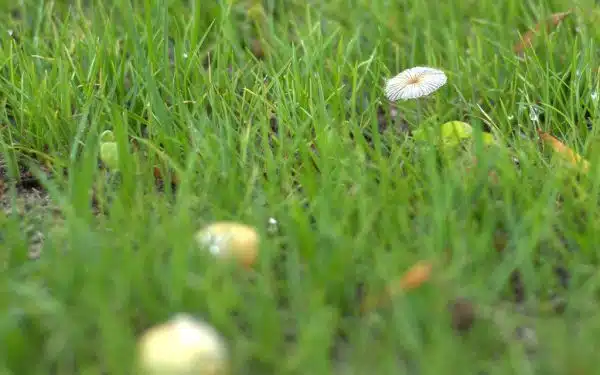Maintaining a healthy and beautiful lawn requires consistent care and attention. One of the most important aspects of lawn care is applying fertilizer to provide essential nutrients for proper growth and development. However, many homeowners struggle with the proper application of lawn fertilizer, which can lead to uneven growth, burnt grass, or even damage to the surrounding environment.
As a lawn care specialist, I have seen firsthand the benefits of properly applying lawn fertilizer. Not only does it promote healthy grass growth and enhance the overall appearance of your yard, but it also helps to prevent weed growth and reduce susceptibility to pests and diseases. In this article, we will discuss how to apply lawn fertilizer effectively using best practices and techniques that will help you achieve a lush green lawn that you can be proud of.
Understanding Your Lawn’s Nutritional Needs
As a lawn care specialist, it is essential to understand the nutrient requirements of your lawn. Each type of grass has unique nutritional needs that must be met for optimal growth and health. Understanding nutrient deficiencies is crucial in identifying any issues with your lawn’s health. Common signs of nutrient deficiency include yellowing or browning of the grass, stunted growth, and thinning patches.
On the other hand, over-fertilization can also harm your lawn by burning the roots and causing excessive growth. Identifying the signs of over-fertilization is equally important as recognizing nutrient deficiencies. Over-fertilized lawns may have an excessive amount of thatch buildup, spongy areas when walking on them, or even water runoff from uneven soil surfaces.
To maintain a healthy lawn, it’s necessary to strike a balance between under and over-fertilizing. Proper fertilization promotes vigorous root development and improves resistance to pests and disease. By understanding your lawn’s nutritional needs and identifying potential issues such as nutrient deficiencies or over-fertilization, you can take steps towards promoting a beautiful and healthy lawn. In the next section, we will discuss how to choose the right type of fertilizer based on your grass type and soil conditions.
Choosing The Right Type Of Fertilizer
To achieve a lush and healthy lawn, choosing the right type of fertilizer is crucial. Before selecting a fertilizer, it is essential to understand its composition. Fertilizers contain essential nutrients that are necessary for plant growth, such as nitrogen, phosphorus, and potassium. Organic fertilizers are made from natural sources like animal waste and composted plant material. Synthetic fertilizers are chemically produced and have a higher concentration of nutrients.
Organic vs. synthetic fertilizers have their benefits and drawbacks. Organic fertilizers release nutrients slowly over time, preventing nutrient burn or excessive growth. They also improve soil structure and promote microbial activity in the soil, which leads to better plant health in the long run. However, they tend to be more expensive than synthetic fertilizers and may not provide enough nutrients for optimal growth.
On the other hand, synthetic fertilizers provide an immediate boost of nutrients to plants, ensuring rapid growth and greening up your lawn quickly. They are also more cost-effective than organic fertilizers and contain specific nutrient ratios that can target specific deficiencies in your soil. However, they do not improve soil structure or microbial activity in the same way organic fertilizers do.
In summary, both organic and synthetic fertilizers have their advantages depending on what you want to achieve with your lawn care routine. Analyzing your soil’s pH levels can help you determine which type of fertilizer will work best for your lawn’s needs. In the next section, we will discuss how to analyze your soil’s pH levels properly without using any complicated equipment or tools.
Analyzing Your Soil’s Ph Levels
To properly care for your lawn, it is essential to analyze your soil’s pH levels. Proper soil pH is necessary for optimal nutrient uptake and overall plant health. Understanding how to analyze your soil’s pH levels can help you troubleshoot any issues that may arise in the future.
To begin analyzing soil pH, you will need a soil testing kit. These kits are readily available at most gardening stores and online retailers. Once you have acquired a kit, take a small sample of soil from the area where you plan to fertilize and follow the kit’s instructions carefully. It is important to avoid common mistakes such as using contaminated tools or taking samples from areas with standing water.
After analyzing your soil’s pH level, you may encounter some troubleshooting tips to help correct any issues found. For example, if your soil is too acidic, adding lime can help raise its pH level. Conversely, if your soil is too alkaline, sulfur can be used to lower its pH level. As always, it is crucial to follow manufacturer directions when applying these products and avoid over-application.
Moving forward with lawn care, understanding the proper amount of fertilizer needed for your lawn is essential. Analyzing your soil’s pH level provides an excellent foundation for determining the appropriate amount of fertilizer needed for optimal growth. In the next section, we will discuss calculating the correct amount of fertilizer needed based on your specific lawn needs without over-fertilizing or under-fertilizing.
Calculating The Correct Amount Of Fertilizer
Now that you have analyzed your soil’s pH levels, it is time to move on to calculating the correct amount of fertilizer for your lawn. This step is crucial in ensuring that your lawn receives the necessary nutrients to grow and flourish. Before applying any fertilizer, it is essential to have the right measuring tools on hand. This will help you accurately measure the amount of fertilizer needed per square foot of your lawn.
When calculating the correct amount of fertilizer, you must adjust for weather conditions such as temperature and rainfall. These factors can affect how much fertilizer is required for optimal growth. It is also important to note that different grass types have varying needs when it comes to fertilizer application. For example, cool-season grasses require more nitrogen than warm-season grasses during early spring fertilization.
To prepare your lawn for fertilization, ensure that it has been mowed at least one day before applying any fertilizer. This will allow the grass blades to recover from any stress caused by mowing and allow for better absorption of nutrients. It is also recommended to water your lawn a day or two before fertilizing as this will help activate the nutrients in the soil and make them more accessible to the roots.
In summary, calculating the correct amount of fertilizer is crucial in ensuring a healthy and vibrant lawn. Use accurate measuring tools and adjust for weather conditions when determining how much fertilizer is needed per square foot of your lawn. Additionally, be mindful of specific grass types’ requirements when it comes to nutrient application. Finally, always prepare your lawn by mowing and watering before fertilizing for optimal results.
Preparing Your Lawn For Fertilization
Before applying fertilizer, it is crucial to prepare your lawn adequately. One essential step is to conduct a soil test to determine the nutrient levels in the soil. This will help you select the right fertilizer and application rate. Additionally, consider the benefits of aeration as it improves soil compaction, allowing air and water to penetrate through the roots system freely. This allows nutrients from fertilizer to be absorbed more efficiently by your lawn.
Another critical step to prepare your lawn for fertilization is pre-fertilization weed control. Weeds compete with your grass for nutrients, water and sunlight, which can hinder the effectiveness of fertilization. Prioritize eliminating any weeds present to ensure that your grass receives all the necessary nutrients from the fertilizer.
To emphasize these points further:
- Conduct a soil test before applying fertilizers
- Determine nutrient levels in soil
- Select appropriate fertilizer and application rate based on results
- Prioritize pre-fertilization weed control
- Weeds compete with grass for nutrients
- Hinders effectiveness of fertilization
Proper preparation of your lawn before fertilization can greatly increase its overall health and appearance. By conducting a soil test and performing pre-fertilization weed control, you will be able to provide your lawn with optimal growing conditions. In turn, this will allow it to better absorb nutrients from fertilizer applications, leading to a lush green lawn that is sure to impress. In the next section, we will discuss how to choose the right application equipment for your lawn fertilization needs.
Choosing The Right Application Equipment
When it comes to applying lawn fertilizer, choosing the right application equipment can make all the difference. The type of equipment you use will depend on the size of your lawn and the type of fertilizer you’re using. For smaller lawns, a handheld spreader may be sufficient, while larger lawns may require a push or tow-behind spreader. Make sure to read and follow the manufacturer’s instructions for your specific equipment.
One important factor to consider when fertilizing your lawn is the benefits of aerating beforehand. Aerating involves perforating small holes in your lawn to allow air, water, and nutrients to penetrate deeper into the soil. This can help your grass roots grow stronger and healthier, leading to a greener lawn. Additionally, aerating can help prevent fertilizer runoff by allowing it to be more easily absorbed by your soil.
Another tip for preventing fertilizer runoff is to apply it in the correct conditions. Ideally, you should apply fertilizer when there is no rain forecasted for at least 24 hours and when there is little wind. Applying fertilizer during hot or dry weather can also increase the risk of runoff as your soil may not be able to absorb it properly. By choosing the right application equipment, aerating beforehand, and applying in optimal conditions, you can ensure that your lawn receives all the benefits of proper fertilization without harming the environment.
Applying Fertilizer In The Correct Conditions
Having the right equipment for applying fertilizer is crucial, but equally important is choosing the best time to fertilize. Understanding the effects of weather on fertilization can help ensure that your lawn receives the maximum benefits from your efforts.
Fertilizing your lawn at the right time can make a significant difference in its overall health and appearance. For cool-season grasses, it’s recommended to apply fertilizer in early spring or fall, while warm-season grasses should be fertilized during late spring or summer. Applying fertilizer during these times allows the grass to absorb nutrients when it needs them most, promoting growth and development.
The weather conditions when you’re applying fertilizer can also impact its effectiveness. Rain and high humidity are ideal conditions for fertilization as they help distribute the nutrients throughout the soil. On the other hand, hot and dry weather can cause the fertilizer to evaporate or burn the grass blades, leading to uneven growth patterns and potential damage. Therefore, it’s essential to choose a day with mild temperatures and moderate humidity when applying fertilizer for optimal results.
- Water your lawn before applying fertilizer.
- Use a spreader to distribute fertilizer evenly across your lawn.
- Avoid overlapping application areas as this can lead to over-fertilization.
- Sweep up any excess fertilizer from sidewalks or driveways to prevent runoff into nearby water sources.
Spreading fertilizer evenly and uniformly is crucial for its effectiveness on your lawn. In our next section, we will discuss how you can achieve this task through proper techniques and methods.
Spreading Fertilizer Evenly And Uniformly
To achieve a healthy, lush lawn, it is important to ensure that the fertilizer is spread evenly and uniformly. Even application is crucial for proper absorption of nutrients by the grass and avoiding patchy growth. The best way to achieve even application is by using a fertilizer spreader.
When using a fertilizer spreader, it is essential to follow the manufacturer’s instructions carefully. To avoid clumps in your lawn, make sure to set the spreader at the correct setting as recommended on the product label and adjust it according to your lawn’s size and shape. Walk slowly and steadily across your lawn while spreading the fertilizer, ensuring that each area receives an equal amount of coverage.
As you apply fertilizer with your spreader, be mindful of any irregularities in your lawn’s terrain. Try to overlap slightly with each pass to ensure even coverage over hills or depressions where runoff can occur. Be careful not to spill any fertilizer onto sidewalks or driveways as this can harm nearby plants and cause them to die off. With these tips, you will have a well-fertilized lawn that grows evenly without clumps or patches.
Looking for ways to keep your lawn healthy may lead you down paths that result in overfertilization and burnt grass. However, there are steps you can take to prevent these issues from happening while still achieving optimal growth for your lawn. Keep reading for more information on how to avoid these problems and maintain a healthy green yard!
Avoiding Overfertilization And Burnt Grass
Spreading lawn fertilizer is an essential task for maintaining a healthy and beautiful lawn. However, it is important to avoid overfertilization and burnt grass, which can harm your lawn. According to research, overfertilizing can increase the risk of runoff, leading to water pollution in nearby bodies of water. Therefore, it’s crucial to apply fertilizer evenly and with the proper timing.
Preventing runoff is a critical factor in applying lawn fertilizer. To prevent this problem, you should apply the fertilizer when the soil is dry or slightly moist. Applying fertilizer on wet soil increases the chances of runoff as rainwater will wash away nutrients before they reach the roots of your grass. Before applying any fertilizer, make sure that there are no forecasted rains for at least 24 hours after application.
Proper timing is also essential for successful fertilization. The best time to fertilize your lawn depends on where you live and the type of grass you have. Generally, it’s recommended to fertilize during spring and fall when temperatures are mild, and rainfall is frequent. Avoid fertilizing during hot summer months as this can lead to burnt grass due to increased evaporation rates. By following these tips, you can ensure that your lawn receives the right amount of nutrients without causing any harm or damage.
Watering your lawn after fertilization is essential as it helps distribute nutrients evenly throughout your yard while preventing overfertilization and burnt grass. However, improper watering practices can lead to runoff or nutrient leaching into nearby bodies of water. Therefore, it’s important to water slowly and deeply immediately after applying fertilizer while making sure not to overwater or underwater your lawn. With proper watering techniques combined with appropriate application methods and timing, you can achieve a lush green lawn that enhances your landscape’s beauty while keeping it healthy for years to come!
Watering Your Lawn After Fertilization
Timing is essential when it comes to watering your lawn after fertilization. You don’t want to water your lawn too soon after applying the fertilizer, as this can wash away the nutrients and render the application useless. On the other hand, waiting too long to water can cause the fertilizer to burn your grass. Therefore, it’s crucial to follow a strict watering schedule that suits the type of fertilizer you are using.
Deep watering is another important factor in maintaining a healthy lawn after fertilization. This technique involves saturating the soil with water to a depth of at least six inches. Deep watering helps nutrients from the fertilizer reach deeper into the root system of your grass, ensuring its health and vitality. In addition, deep watering also helps prevent shallow roots, which can make your lawn more susceptible to drought and disease.
Overall, timing and deep watering are critical when it comes to properly caring for your lawn after fertilization. By following a strict watering schedule and employing deep watering techniques, you can ensure that your grass remains healthy and vibrant throughout the growing season. In our next section, we’ll discuss scheduling regular fertilization maintenance to keep your lawn looking its best year-round without undue stress on its environment or ecosystem.
Scheduling Regular Fertilization Maintenance
Regular fertilization maintenance is an essential part of ensuring a healthy, lush green lawn. The benefits of fertilizing regularly are manifold – it promotes robust growth, strengthens roots, improves overall turf density and color, and reduces weed invasion. However, neglecting fertilization maintenance can expose your lawn to several risks.
One of the most significant risks of neglecting fertilization maintenance is that it can lead to nutrient deficiencies in the soil which can cause slow or stunted growth of grass. Furthermore, lack of proper nourishment can weaken the roots’ strength, making them more vulnerable to diseases and pests. This can ultimately lead to dead patches on the lawn, which are unsightly and difficult to revive.
Another significant risk of ignoring regular fertilization is that it increases susceptibility to weeds. Weeds thrive in soil that lacks vital nutrients because they do not require much nutrition to grow as compared to grasses. A weed-infested lawn will not only look unattractive but also increase your workload as you will have to spend more time removing them manually or using herbicides.
Regular fertilization maintenance is vital for a healthy lawn. The benefits are numerous while the risks are avoidable. Neglecting this crucial aspect of lawn care can lead to undesirable outcomes such as slow growth, weakened roots, pest infestations, weed invasion and dead patches. By ensuring regular fertilization maintenance, you will be taking a proactive step towards maintaining a vibrant and healthy lawn all year round. In the subsequent section, we will discuss how storing fertilizer safely and securely can help prevent accidents while handling chemicals.
Storing Fertilizer Safely And Securely
Just like any other chemical substance, fertilizers can be dangerous if not stored properly. Storing fertilizer safely and securely is essential to prevent accidents and ensure optimal effectiveness. Proper storage of fertilizers also helps to maintain their shelf life and avoid waste.
One of the most important safety tips for storing fertilizers is to keep them away from heat and moisture. Fertilizers are often made up of chemicals that can react with water or humidity, causing them to lose their potency or even become explosive. Therefore, it is vital to store fertilizers in a cool, dry place where they will not be exposed to moisture or direct sunlight.
Another important factor to consider when storing fertilizer is the type of container used. The best containers for storing fertilizer are those that are airtight, sturdy, and made of non-reactive materials such as plastic or metal. It is also crucial to check the expiration date on the fertilizer bag before purchasing it. Using expired fertilizer may reduce its effectiveness or even lead to crop damage.
Understanding how to store lawn fertilizer safely and securely is just one aspect of responsible lawn care management. In the next section, we will explore the environmental impact of using fertilizers on lawns and gardens. By understanding this impact, you can make informed decisions about how best to care for your lawn while minimizing harm to the environment.
Understanding The Environmental Impact Of Fertilization
Environmental Impact of Fertilization
Fertilization is an essential aspect of lawn care that can have significant environmental impacts if not done correctly. Over-fertilization, for instance, can lead to excessive nutrient runoff into waterways, which can cause algal blooms and fish kills. This runoff may also contribute to the growth of invasive species that outcompete native plants.
To mitigate these negative effects, it is crucial to adopt sustainable practices when applying lawn fertilizer. One way to do this is by using slow-release fertilizers that release nutrients gradually over an extended period. This approach reduces the risk of nutrient leaching and ensures that the grass receives a consistent supply of nutrients. Another sustainable practice is to use organic fertilizers such as compost or manure, which are less likely to harm the environment compared to chemical fertilizers.
It is also essential to follow proper application techniques when applying fertilizer. For example, avoid fertilizing before heavy rainfall or watering the lawn excessively after application since this can increase nutrient runoff. Adhering to these sustainable practices will help preserve the environment while promoting healthy lawns.
Moving on from understanding the environmental impact of fertilization, let’s now discuss how you can troubleshoot common issues that arise during lawn fertilization.
Troubleshooting Common Fertilization Issues
As we have discussed in the previous section, fertilization has a significant impact on the environment. However, it is also crucial for maintaining healthy and lush lawns. In this section, we will focus on troubleshooting common fertilization issues and provide some tips on how to diagnose nutrient deficiencies and adjust fertilization schedules.
Diagnosing nutrient deficiencies can be challenging, but it is essential to determine what your lawn needs for optimal growth. One of the most common signs of nutrient deficiency is discoloration or yellowing leaves. This could indicate a lack of nitrogen, which is necessary for promoting leafy growth. On the other hand, if your lawn has stunted growth or sparse patches, it may need more phosphorus to promote root development. Lastly, if you notice that your lawn has poor resistance to heat or drought stress, it may require potassium to boost its overall health.
Once you have identified the nutrient deficiency in your lawn, adjusting your fertilization schedule accordingly can help address the issue. However, it’s important to note that over-fertilizing your lawn can cause more harm than good. To prevent this from happening, always follow the recommended application rates and avoid applying fertilizer during hot or dry weather conditions when your lawn is under stress.
In cases where diagnosing and adjusting your fertilization schedule seems too daunting or time-consuming, seeking professional lawn care services might be a viable option. Professional lawn care specialists have extensive knowledge and experience in diagnosing and treating common lawn problems such as nutrient deficiencies and over-fertilization. By outsourcing these tasks to professionals, homeowners can ensure their lawns receive tailored treatments while saving time and effort.
Seeking Professional Lawn Care Services
Hiring a professional lawn care service has its pros and cons. On the one hand, it saves you time and effort because you do not have to do it yourself. Professional services can also provide you with expert advice on how to take care of your lawn properly. They use quality equipment and fertilizers that are not readily available in the market.
On the other hand, hiring professional services can be expensive, especially if you need regular maintenance. There is also a risk of relying too much on them that you become complacent about your own responsibility for taking care of your lawn. Moreover, some people prefer to do things themselves as part of their personal satisfaction or as a way of bonding with their family members.
If you decide to apply fertilizer on your own, here are some tips that can help you get started. First, choose the right type of fertilizer based on the needs of your soil and grass. Second, follow the instructions carefully when applying fertilizer to avoid over-fertilization or under-fertilization. Third, water your lawn after applying fertilizer to activate its nutrients and prevent burning.
In summary, there are advantages and disadvantages to hiring professional lawn care services versus doing it yourself. It ultimately depends on your budget, preference, and skill level. Regardless of which option you choose, make sure to give your lawn proper attention and care so that it grows healthy and beautiful all year round.
Conclusion
As a seasoned lawn care specialist, it is important to understand the nutritional needs of your lawn before applying fertilizer. Choosing the right type of fertilizer and analyzing your soil’s pH levels are crucial steps in ensuring that your lawn receives the appropriate nutrients. Calculating the correct amount of fertilizer and properly preparing your lawn for fertilization are also key factors to consider.
It is equally important to store fertilizer safely and securely, as well as understand the environmental impact of fertilization. Troubleshooting common fertilization issues can help you maintain a healthy and thriving lawn. However, seeking professional lawn care services may be necessary for more complex issues or for those who lack experience in this area.
By following these guidelines, you can effectively apply lawn fertilizer while promoting sustainable practices that benefit both your lawn and the environment. Remember, a well-maintained lawn not only enhances the curb appeal of your property but also provides a space for relaxation and recreation for you and your loved ones.
Image Credits
- “Mushroom growing in the freshly seeded fertilized and watered lawn” by freeloosedirt (featured)





























